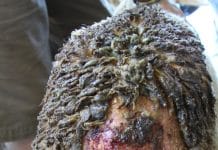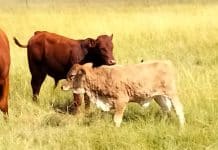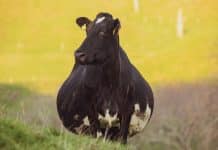
For Jan Masiu, who used to earn his living as a farm worker in the Marquard area of the Free State for most of his life, sitting at home after retiring in 2011 was not an option. He wanted to continue farming on his own with the 75 head of cattle he managed to accumulate over the years.
Read another success story here.
Finding a farm, however, proved to be difficult. After a protracted process of applying for government assistance, he was successful in 2017, and was given the opportunity to rent the farm Driekoppen in the Senekal area on a 30-year lease agreement with the option to buy.
“While I was waiting to find my own farm, I kept my livestock on the farm of MJ Mohape, on the other side of Senekal, to whom I will be forever grateful. In time I was able to move my animals to my own farm.”
Reaping the rewards of hard work
Driekoppen, however, was in a state of disrepair. The first thing Jan did was to repair the infrastructure, starting with the house and garden, then moving on to the waterpipe network and dams. He also made headway eradicating bankrupt bush (slangbos) on the farm with funding from the Department of Agriculture, Land Reform and Rural Development. For this he employed people from the township.
“I have been a foreman for many years and know how to manage people. For me it is important to lead by example, so I made a point of working shoulder to shoulder with the workers I employed.”
An early setback came when Jan wanted to plant Driekoppen’s first maize crop. The government-supplied long growth season white maize cultivar was delivered too late. “We started planting at the end of December. Although the maize grew very well, the first frost caught us before the maize was ready. There was very little income from the maize, yet I still had to pay all the contractors. Fortunately, I had also planted some sunflower, and the harvest brought in enough money to buy a bakkie, which I urgently needed.”
During this time, says Jan, his previous employer, Johan Schimper from Marquard, was a tremendous help. Not only did he give invaluable advice, but he also provided implements to get the crops in the ground and to do the harvesting. Jan also received assistance via the government’s LandCare Programme.
“Despite all the support, which I really appreciate, not having your own implements always puts you at a disadvantage. When you need to combat weeds, for example, the implements are not necessarily available. This obviously influences yield. Despite these challenges our crop looks promising this year.”

With a helping hand from Sernick
Jan’s eldest son, Bush, was working in Bloemfontein when his father acquired the farm. He immediately resigned from his job to join Jan.
“I grew up on a farm, so I knew what I was letting myself in for. In 2018 I was fortunate enough to receive training through the Sernick Jobs Fund Programme. I also participated in the carcass competition, where I won the National Super Ox Award for emerging farmers. Although I had a bit of farming knowledge, I learnt most of what I know at Sernick. My main interest is livestock production rather than crop production.”
Driekoppen has 315ha of crop fields and 376ha of grazing. “We divided the crop fields into two sections,” explains Jan. “Every year we alternate between maize and a crop with a shorter growth period such as sunflower or beans. Directly after harvesting these short growers, we put in a winter cover crop for the cattle. This, together with the maize stubble, provide enough winter grazing to fill any fodder flow gaps.”
The official carrying capacity of the farm is five to one, but along with the crop fields for winter grazing, the potential is considerably more. They currently run 177 head of cattle and some 70 sheep.
Even before their introduction to Sernick, says Bush, they had been Bonsmara fans – Jan had a mixed herd before, consisting of Nguni- and Drakensberger-type cows. Sernick runs a support programme in which heifers and bulls are placed with qualifying farmers. The Masius received 34 Bonsmara heifers and a bull from Sernick.
“According to this programme,” explains Bush, “we have to give back 40% of the offspring for three years, of which we have one year left. They also assisted us in repairing the dams and fences. Sernick really made a huge difference.”
Making the most of what you have
Getting a farming enterprise going is no easy feat, especially in terms of cash flow during the first few years, says Jan. “We have to pay Eskom, for example, as well as pay for inputs and labour. Fortunately, with Bush here, we do not have to employ full-time labourers and we only make use of extra labour for specific jobs.
Apart from Bush, Jan and his wife, Agnes, have three other children. Gloria is receiving meat processing training at Sernick, Jeanette works in Bethlehem, and the youngest, Vincent, is studying agriculture at the Central University of Technology (CUT) in Bloemfontein.
“I told my family that we need to make sacrifices to reach our goal of becoming a profitable farming operation. We have a very clear goal and even though things might be difficult in the short term, we should never take our eyes off that goal. We stay afloat by selling oxen, weaners, old cows, sheep, and pigs. For the first time this year, we are hoping for a good enough crop to be able to buy a tractor and to keep a nest egg to make things easier.”
A market that has the potential to be very lucrative, says Jan, is the cultural market created around social events. For any event, such as a funeral or wedding, cattle or sheep are slaughtered.
The Masius try to live on a cash basis. Although he hates debt, says Jan, sometimes it cannot be prevented. However, he makes sure there is a plan in place to settle the debt as soon as possible. “Our aim is to have animals ready for the market three or four times a year so that, together with the crop, their income is spread over the year. This should alleviate cash-flow constraints considerably.”
What the future holds
Sernick is an excellent example of how vertical integration can be incorporated into a farming operation. “Five years from now I would like to see the same type of diversity in our own production setup. Apart from the cattle, I would like this to include a broiler operation, a bigger sheep operation, a piggery, as well as a well-oiled cropping branch to provide us with most of the feed we need for our livestock.
“All these operations should be geared towards marketing directly to the consumer, as this will give us control over our product throughout the value chain. This is the only way in which this farm will be able to accommodate our whole family.” – Izak Hofmeyr, Stockfarm
Click here to read about another inspirational farmer.
For more information, contact Jan Masiu on 073 813 3562
or Bush Masiu on 073 904 8799.








